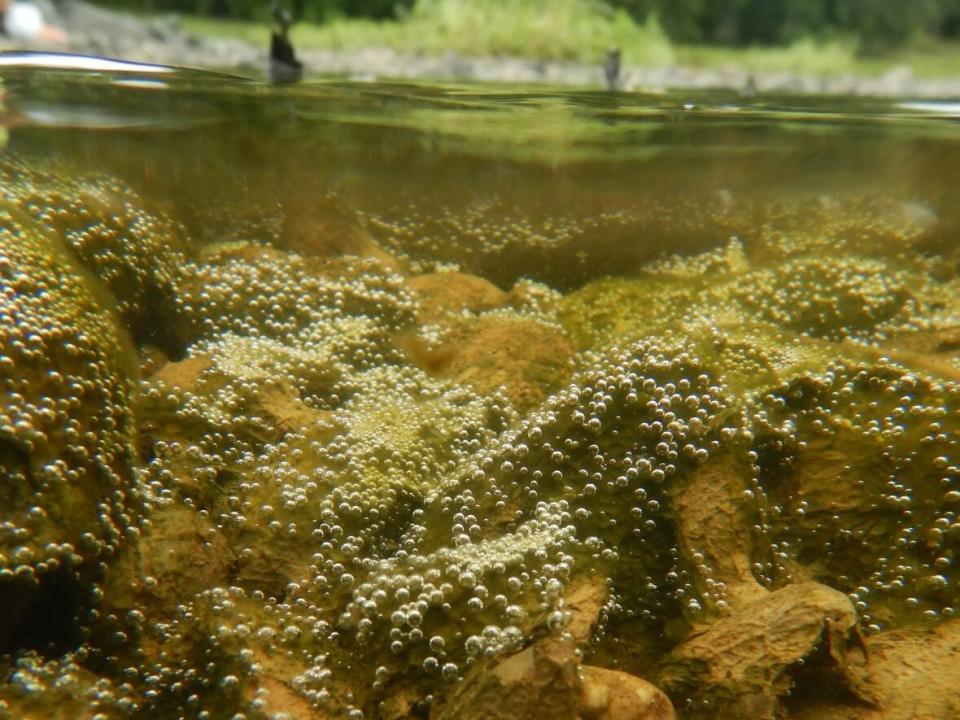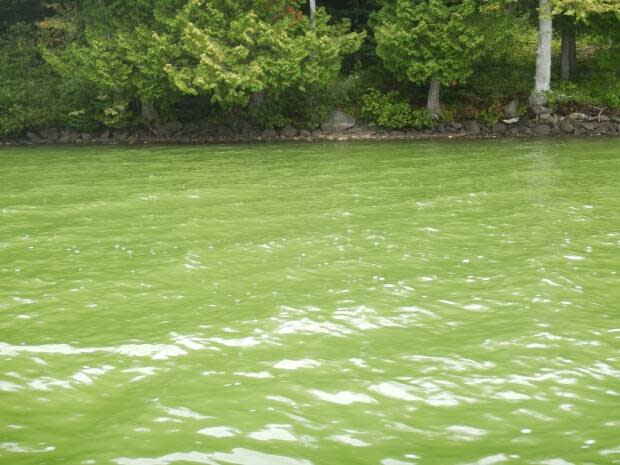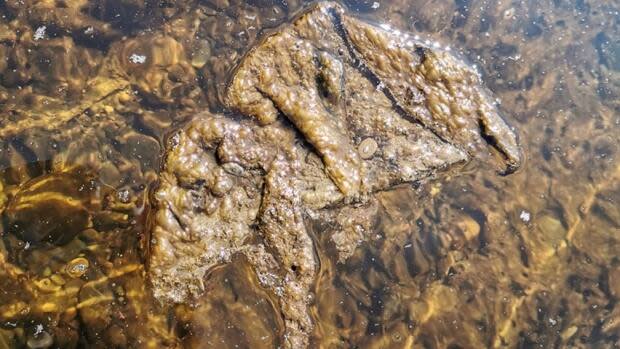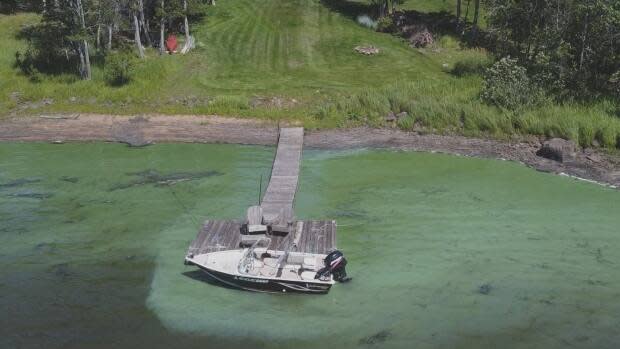
Although it isn't quite summer yet, blue-green algae, also known as cyanobacteria, is already showing up in New Brunswick waterways.
Meghann Bruce, a researcher and instructor with the University of New Brunswick Canadian Rivers Institute, said as soon as the ice went out in early May, there was a "bloom" in Blue Bell Lake near Grand Falls.
"Blooms could be happening right now, so people should be watching for them anytime they're around water," she said.
Bruce said there are two types of blue-green algae blooms.


A surface bloom is when there are thousands or millions of cells occurring throughout the water, which often results in a green colour. Up until a few years ago, this type of bloom was more common in the province, she said.
But the other type, a benthic mat, grows at the bottom of rivers and lakes and can sometimes float up to the surface. Bruce said this type of bloom is more like a dense, slimy carpet.
"They're actually really important organisms. Like plants, they release oxygen. They were the organisms that gave Earth its first oxygen, so they changed the atmospheric composition of Earth, ultimately paving the way for humans to exist," she said.
"But unfortunately, they can also be problematic for people and their pets, because sometimes in aquatic environments, they grow to very high densities, which is when we see a bloom appear."
Both types can be toxic. Some can cause skin irritation, said Bruce, but the main danger comes if they are ingested.
Cyanobacteria and dogs
"I think it's natural human behaviour to want to avoid these types of areas when a bloom is occurring," she said.
"Dogs on the other hand, the risk is a bit different because dogs will seek them out. Dogs are very attracted to some of these blooms."
In 2018 and 2019, CBC reported on four dogs that died from cyanobacteria, after swimming in, or playing near the St. John River, also known as the Wolastoq.


Bruce said to not let your dogs drink the water, and stop small children from playing in gooey things on the water's edge. She also said if you have a boat, check to make sure there are no mats stuck to the side of the craft when taking it out of the water.
"Maybe you've even left your dog at home, but you wouldn't want to bring a piece of mat home and have it fall off in your driveway and your dog to go after it."


Bruce said it is good that the province puts signs up around rivers and lakes reminding people about blue-green algae. She said people tend to forget about it until something serious happens, such as the death of a pet.
But she said the warning signage doesn't necessarily mean the water is toxic or that the risk is there all the time, it just means the water body can produce it and people should beware.
Bruce said people should watch for green water or green mats, but also golden brown or grey mats that were turned that colour from sun bleaching.
She said people also tend to think that blooms can only occur in stagnant or slow moving water, but the toxic blooms she's currently studying in Fredericton are in clear, fast-flowing waters.


But she said there's no amount of sampling that can guarantee safety. She said even if it were possible to monitor every lake in New Brunswick, samples could be collected in the morning, and the status of the water could change by afternoon.
"Blooms can change that fast. It can be as simple as, you know, things moving with changes in wind direction," said Bruce.
"The best guarantee is to be on the lookout for the conditions around you."
*****
Credit belongs to : ca.news.yahoo.com
 Atin Ito First Filipino Community Newspaper in Ontario
Atin Ito First Filipino Community Newspaper in Ontario






